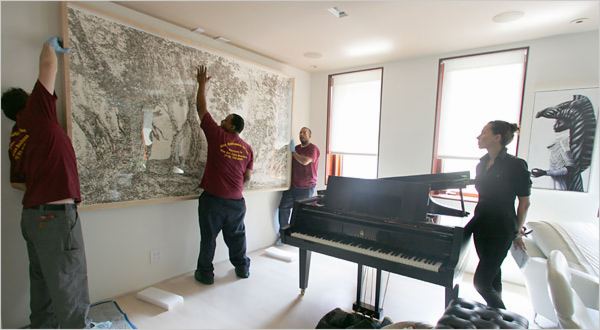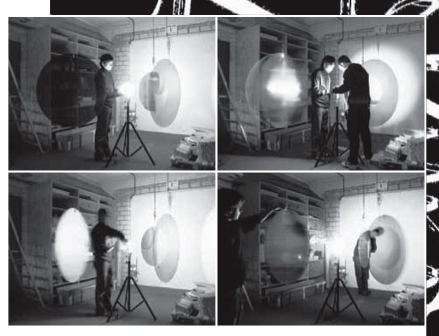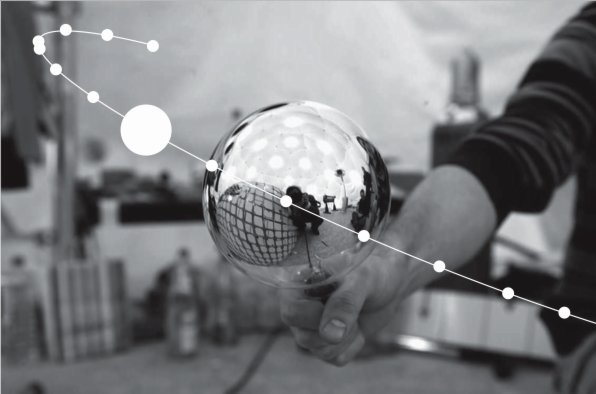As the art market began heating up and becoming much more fashionable a few years ago, I started to wonder what the effect of all this demand would be on the art that was produced. Surely, 95-plus percent of the objects and paintings would not ever be made, projects wouldn't be conceived, much less realized, in the absence of an insatiable-seeming market.
Sure, like Morris Louis and Clyfford Still before them, painters and drawers might produce work at a grueling pace, then roll them up and stuff them in a barn--or their parents' suburban attic crawlspaces or whatever the equivalent is today. Conceptualists might follow Dan Flavin's footsteps and design all their work and file it away for execution in the event anyone ever actually bought it. And that might be happening.
But there are giant works with cost- and labor-intensive production requirements; public commissions for new cultural capitals; hundreds of linear miles of art fair booth walls to be filled; follow-on rounds of loft and country home renovations proceeding apace. The art market needs product.

That photo a few weeks ago in the Times of yet another near-life-sized inky tree by Ugo Rondinone being art handled into place was a clincher; it accompanied an article about bankers and hedge fund managers compelled to quit their dayjobs in order to manage their serial seven- and eight-figure remodeling projects. Can someone please explain why I should care about art whose most salient feature is its ability to anchor a handrubbed plaster wall in a townhouse that never gets lived in?
I was pleasantly surprised to find that Richard Prince is a source of wisdom on this question of art world demand. Like the Dalai Lama, my problem isn't with the man himself, but with his Richard Geres. And at this Conde Nast-LVMH-Guggenheim-Phillips dePury moment, the man has way too many Richard Geres.
Yet in the 4-part video follow-around on VBS.tv, Prince is very convincing when he says he doesn't give a damn what anyone thinks about his work, and the good thing about people wanting to buy it is that it helps him make more work. Whether the world is a better place with a dozen more nurse paintings in it actually feels beside the point, even if it's not. To see a nurse painting propped nonchalantly in the background, and to know that Prince could make another tomorrow--or not--imbues these now-precious objects with an unshakable arbitrariness, entirely subject to the artist's prerogative. Which is entirely at odds with the disintermediating artifice of the primary dealer and her waitlists--and with the even more intense simulation of rarity of the auction block. And still we come.
It makes me think, too, of Olafur Eliasson's work, but for entirely different reasons. As the scale, complexity and spectacle of Olafur's work has expanded, most dramatically since his 2004 Turbine Hall installation, it's sometimes seemed that literally any idea or iteration or object that crossed through his head could be realized. The question became, "should it?" With no apparent physical, production, or economic constraint, does the artistic process get inverted and lose the refinement, iteration, editing, and winnowing steps that presumably results in the strongest work?

Is any/every possible configuration of hanging prism, spotlight, and rotating motor equally "good"? Do we weigh the significance of each element and decision differently if we know it's the only one or if we know that every other variation exists somewhere, too, in a European private collection? Or is "uniqueness" as misplaced an object of our artistic rapture and devotion as "authorship"?

MIT art historian Caroline A. Jones pulled back the curtain on Olafur's prodigious studio practice in an article for last month's special Production issue of Artforum. Somehow threading the needle between the art world's post-object conceptualism and the art market's dazzling luxury consumerism, the studio has made experimentation and research its main "product"; which makes the saleable works something of a "by-product," by-products which fund the ongoing idea production of the studio.
It feels like an imperative transposition for an artist to make, especially when cognizance of the demand for one's work can create an existial crisis. I mean, I buy the stuff, and it often feels superficial, decorative, and money-flaunty; I can only imagine how it can feel to be making it.
And just as the mechanical means--lights, tripods, scrims, scaffolds, motors--used to create the natural phenomena have always been open, discoverable parts of each work, now Olafur's studio is making its own process and mechanisms known.
Take Your Time is the Studio's magazine. Vol. 1, Small spatial experiments, goes behind into the scenes, documenting several recent high-profile projects, including the Serpentine Pavilion, BMW's Art Car, the Music Hall in Reykjavik, Pinault's Venetian Christmas decorations, and some that could actually be considered small.
I don't know if it's coming to a Barnes & Noble near you, but I imagine it'll be at the galleries. And it's available as a nice, fat PDF file from the Studio website.
Take Your Time, Vol. 1, Small spatial experiments [olafureliasson.net]












